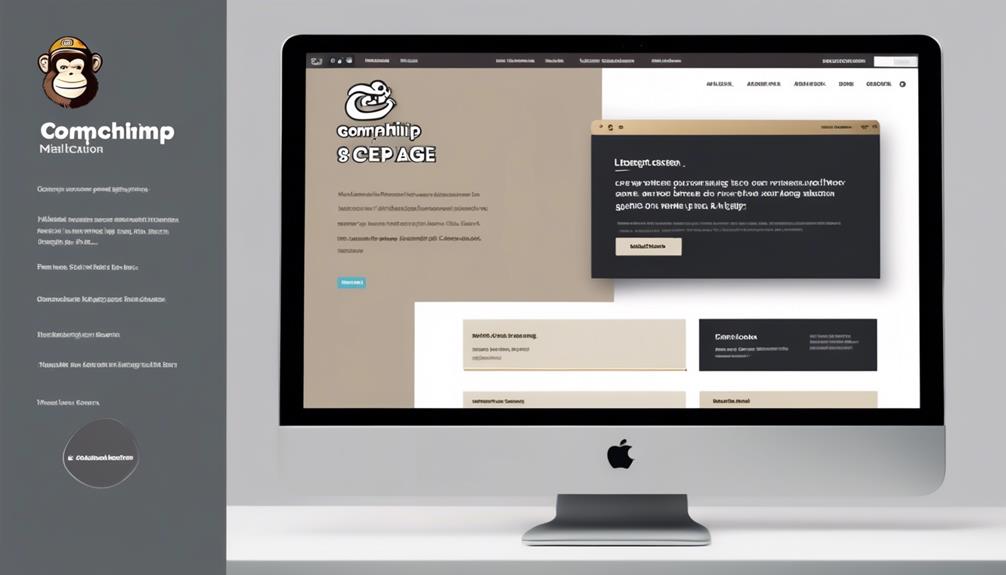While navigating the complex world of email etiquette, creating a P.S. is comparable to sprinkling a hint of seasoning onto a dish – it should improve without overshadowing.
The art of composing a compelling P.S. in an email requires finesse and precision, ensuring that it leaves a lasting impact on the recipient.
Let's explore the nuances of this often underestimated element of electronic communication and how it can elevate your messaging to new heights.
Key Takeaways
- P.S. enhances message impact and grabs attention.
- Keep P.S. concise, personalized, and relevant to the main message.
- Proper formatting and punctuation in P.S. are crucial for effectiveness.
- Utilize P.S. strategically to add personality and highlight crucial details.
Importance of P.S. in Email

In crafting effective email communication, the strategic placement of a compelling P.S. can significantly enhance the impact of your message. The importance of a P.S. lies in its ability to provide additional information or emphasize a key point that you want your recipients to remember.
When used effectively, a well-crafted postscript can grab attention, reinforce your main message, and leave a lasting impression on the reader. The beauty of a P.S. is that it can be used to inject a personal touch, share a relevant update, or even pose a thought-provoking question that prompts further engagement.
By strategically incorporating a P.S. in your emails, you can ensure that important details aren't overlooked and that your message resonates with the recipient long after they've finished reading. Remember, the power of a P.S. lies in its succinctness and relevance to the overarching message you wish to convey.
Crafting a Compelling P.S

Crafting a compelling P.S. is crucial to capturing your reader's attention and reinforcing your email's main message effectively. Consider the following tips to enhance your email marketing campaigns:
- Keep it Concise: A short and snappy P.S. is more likely to capture the reader's attention quickly.
- Personalize It: Adding a personal touch to your P.S. can create a sense of connection with the recipient.
- Include a Call to Action: Use your P.S. as a final push to encourage the reader to take the desired action.
Proper Formatting and Punctuation
After crafting a compelling P.S. to reinforce your email's main message effectively, attention to proper formatting and punctuation becomes crucial to maintain a professional tone and clarity. When adding a P.S. at the end of a letter or email, remember that it is a valuable tool that can be used strategically to leave a lasting impression on the recipient. Proper capitalization and punctuation in the P.S. help in conveying your message clearly and professionally. It's essential to keep the P.S. concise and to the point, ensuring that it does not overshadow the main body of the email.
To help you understand the significance of formatting and punctuation in a P.S., here is a quick guide:
| Formatting | Punctuation | Importance |
|---|---|---|
| Proper capitalization | Use commas wisely | Maintain clarity |
| Bold or italicize key points | Avoid excessive exclamation marks | Professionalism |
| Consider bullet points | Check for spelling errors | Enhance readability |
Effective Use of P.S

Let's make sure your emails stand out – strategically using a P.S. can add that personal touch or highlight crucial details effectively.
When considering the effective use of P.S. in your emails, keep these tips in mind:
- Keep it concise: The P.S. should be brief, focusing on the main point you want to convey.
- Add a bit of personality: Use the P.S. to inject a bit of your personal style or charm into the message.
- Place it strategically: Position the P.S. at the end of your email, after your signature, to ensure it's noticed as an additional note.
Modern Applications of P.S
As we explore the evolving landscape of email communication, harnessing the power of a well-placed P.S. can significantly enhance the impact of our messages. In modern email writing, the P.S. serves as a versatile tool with various applications. From adding a personal touch to emphasizing key points, the postscript can capture the reader's attention and drive home essential details.
In direct mail campaigns, the P.S. can act as a final persuasive element, prompting the recipient to take action.
To stay relevant in today's fast-paced digital world, it's crucial to adapt the traditional use of the P.S. The Chicago Manual of Style suggests that the P.S. should be used judiciously and only when it adds value to the main message. Before hitting send, take a moment to edit and evaluate if the P.S. enhances the overall impact of the email.
A case study on the effectiveness of P.S. in email communication could further illustrate how this modern application can elevate the success of our messages.
Frequently Asked Questions
How Do You Write PS in an Email?
We often add a personal touch to emails with a P.S. It's a clever way to emphasize key points or provide bonus info.
P.S. stands for 'postscriptum,' meaning written after the main body. Keep it brief and impactful, a quick note after your signature but before closing remarks.
Double-check for errors before hitting send.
P.S. – It's a neat trick to make your message stand out!
What Can I Say Instead of PS in an Email?
We can use a separate paragraph to convey additional information at the end of an email. This approach allows for a clear and concise way to include any last-minute details.
By maintaining a focused and personalized touch, we ensure the recipient's attention is captured effectively.
Experimenting with various strategies can help determine what resonates best with the audience, leading to improved outcomes.
Remember always to proofread for errors before sending.
Does PS Mean I Love You?
No, 'P.S.' doesn't mean 'I love you.' It's an abbreviation for 'postscript,' used to add additional information or make a final remark in a letter or email.
While it can convey sentiment, it doesn't specifically mean 'I love you.'
It's important to understand the context in which 'P.S.' is used to interpret its meaning accurately.
Should PS Be Indented?
We believe that PS shouldn't be indented in an email. It should come after the signature. Keeping it brief and consistent is crucial.
Just like a cherry on top of a cake, a well-placed PS can add that extra touch to your message. Consider your audience and purpose before deciding to include one.
Let's make sure our emails end on a high note with a thoughtful PS.
-Is Including a P.S. in an Email to Employees Necessary or Recommended?
When writing professional email employees, including a P.S. can be a powerful way to reinforce your main message or call to action. It can capture attention and add a personal touch, making your communication more impactful. Using a P.S. in your emails can help drive the desired response from your employees.
Conclusion
In conclusion, the P.S. in an email is like the cherry on top of a sundae – a small but delightful addition that can make a big difference.
By keeping it concise, relevant, and well-formatted, you can leave a lasting impression on your reader.
Just like a well-placed cherry can enhance the overall taste of a sundae, a well-crafted P.S. can enhance the impact of your email.
So remember, don't underestimate the power of a good P.S.!










